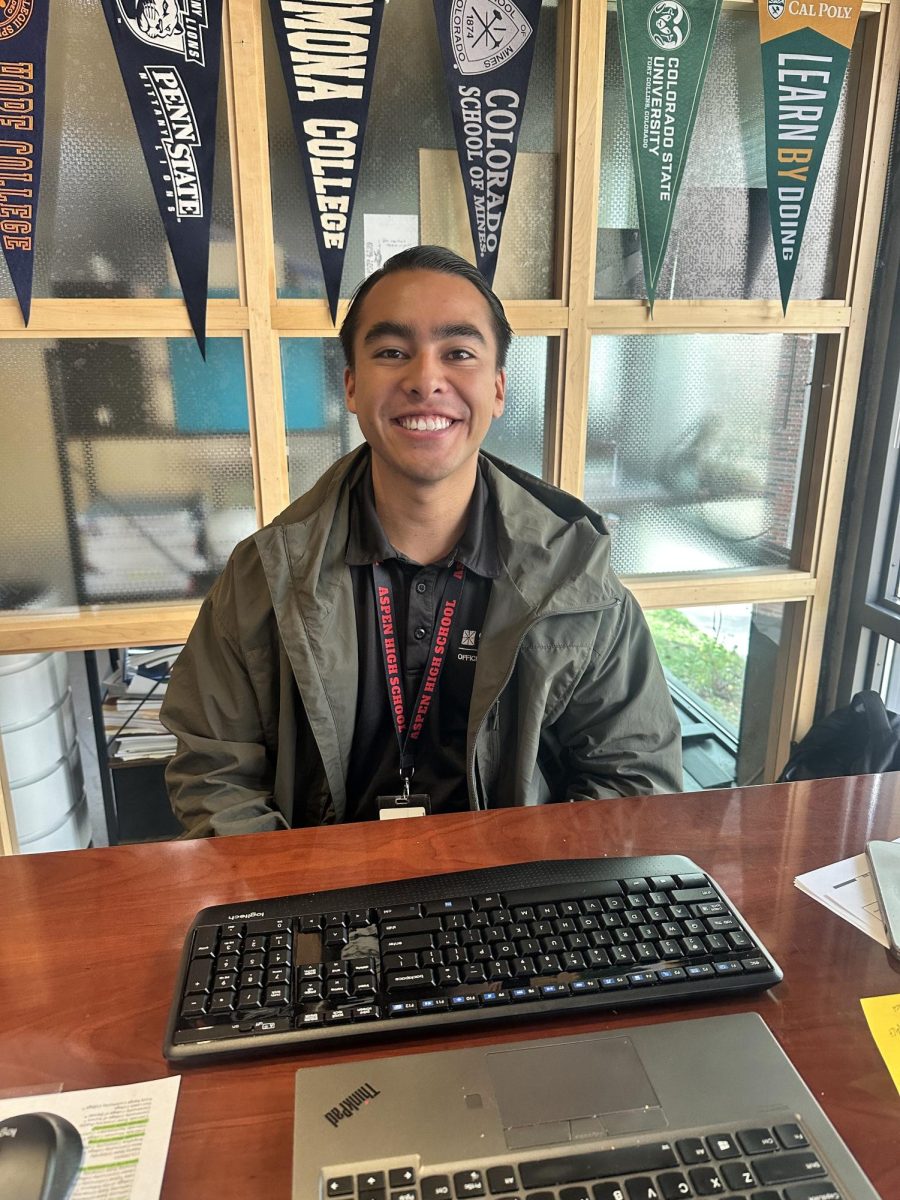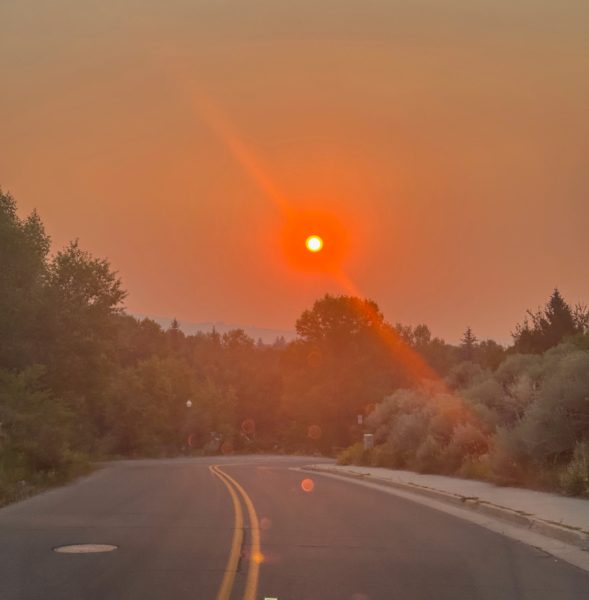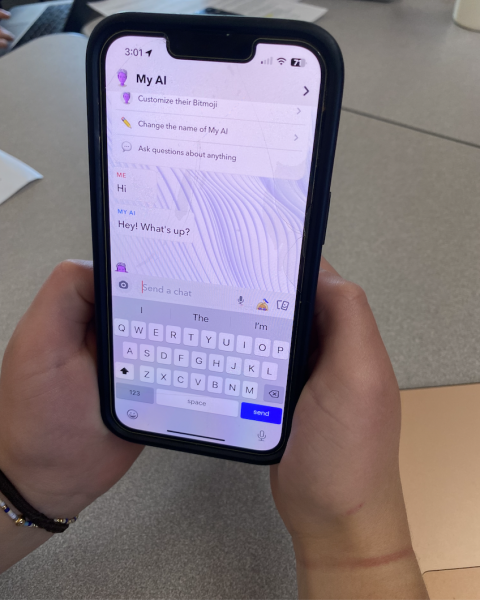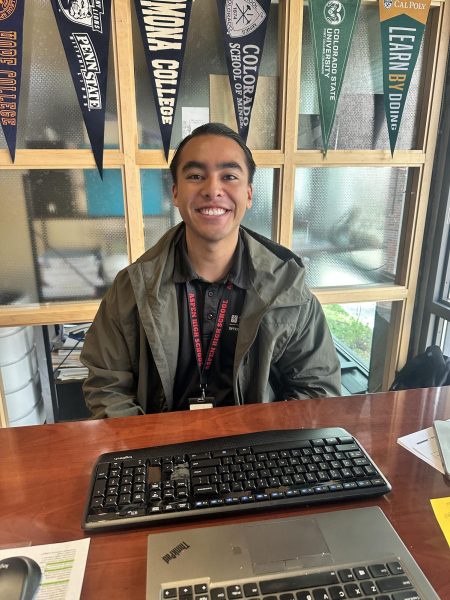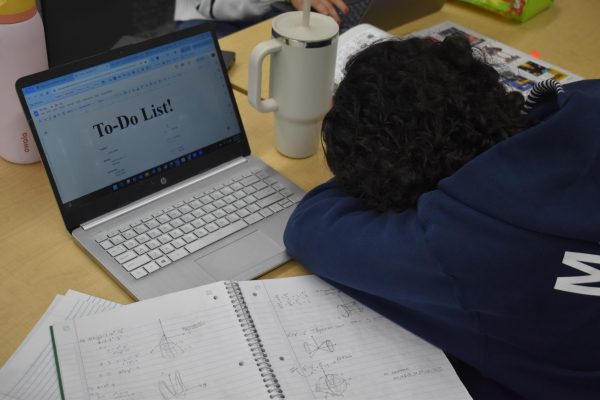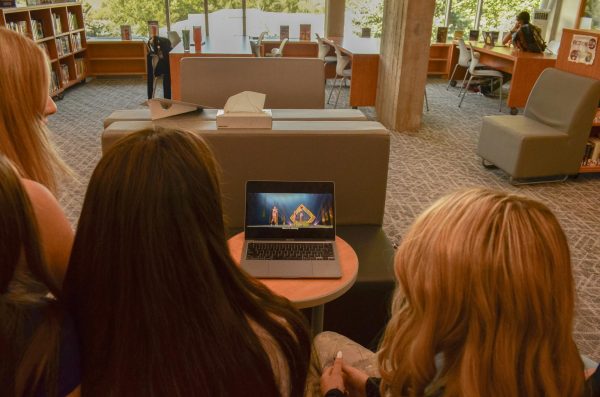Flying High with Aspen Aeronautics
At AHS, students can learn how to solve a trigonometry problem, construct a pair of skis, debate effectively and play guitar. Now, they can also learn how to build and fly an airplane.
The Aspen Aeronautics program was created last year by Greg Roark, whose love of flying — and teaching young students to fly — is infectious. Through Aspen Aeronautics, it is now possible for any AHS student to become a certified private or commercial pilot by the time they graduate and maybe even fly in the program’s own plane, which arrived in Aspen this fall. Students who take the Aspen Aeronautics class, which is an elective, study everything from the aerodynamics of flying in the mountains to weather patterns to repairing an airplane engine.
Roark said that one of his goals is to use the study of Aeronautics to teach students some very difficult concepts and subjects.
“When we fly an airplane, it’s math, it’s science, it’s algebra, communications and history,” he said. “Everything you learn in school, we apply to these airplanes. You learn teamwork, problem- solving, physics and engineering.”
Aspen Aeronautics is based in a classroom in the middle school that contains seven state-of-the-art stationary flight simulators and one full-motion flight simulator.
“There are universities out there that don’t have full-motion flight simulators,” said Roark, who also does all the fundraising for this very expensive program.
“People in this community have been very, very generous,” he said. “To get these tools, a lot of people have made a significant investment in you kids.”
Aspen Aeronautics even purchased an airplane recently. The plane is parked at Aspen Airport and the other day, Roark drove me out to see it. It is a 2010 Diamond DA40: a lightweight, comfortable, four-seater that is sleek and high-tech. It is so high- tech that the plane has the ability to see even when the pilot cannot.
“It’s got synthetic vision in the event that someone is flying and they inadvertently enter a cloud,” Roark explained. “Each of these valleys can develop their own weather system. This glass panel allows you to see even if you can’t see.”
Roark also chose the Diamond plane because it had a stellar safety record.
“Safety is my number one concern; that’s what we strive for,” said Roark adding that people shouldn’t be afraid of flying, “Obviously, things can happen, but you gotta get off the couch. You can’t live your life in a bubble.”
There are also five cameras mounted in the cockpit so that when Roark is giving a flying lesson, any number of students on the ground can watch.
“A student who is sick at home can watch it live in bed,” he said. “We can also beam this into other classrooms that don’t necessarily have an instructor quite like me.”
He added, “This is truly a high altitude classroom. We will also use the aircraft to do experiments and then beam our findings back to the classroom.”
Roark, who used to work for a pharmaceuticals business in Arizona, said that Aspen Aeronautics grew out of his desire to contribute to the next generation.
“For a long time, I’d been thinking, ‘What is really important about what I’m doing?’” he said. “Is it that selfish, ‘feed me’ kind of a thing or is there something I can do for another generation?”
With Aspen Aeronautics, he feels he’s not only helping kids learn about flying but he is pointing them in the direction of a prosperous career path.
“We are facing a pilot shortage in this country,” he said. “Huge. People do not understand yet the magnitude of this shortage. Regional aircraft are already parking planes right now because they don’t have enough pilots.”
Roark and his students are also in the process of obtaining a kit to build their own plane. This plane will be fully operational and will be built and maintained by the students in the program.
“Our goal is, we build one aircraft a year, starting this year,” Roark said. “Students who want to build an aircraft, come to us!”
Charlie Van Allen is a staff writer for the Aspen High School newspaper, The Skier Scribbler. Charlie will be in the graduating class of 2017. Charlie...





